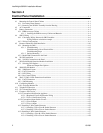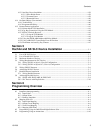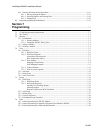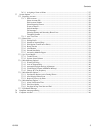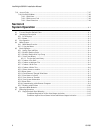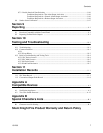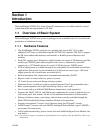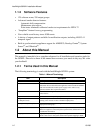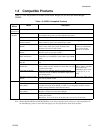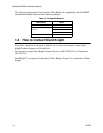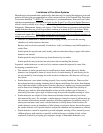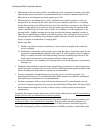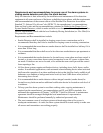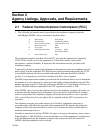
IntelliKnight 5820XL Installation Manual
1-2 151209
1.1.2 Software Features
• 125 software zones, 250 output groups.
• Advanced smoke detector features:
Automatic drift compensation
Maintenance alert region
Point status eliminates calibrated smoke test requirements for NFPA 72
• “JumpStart” feature for easy programming
• Non-volatile event history stores 1000 events
• A choice of output patterns available for notification outputs, including ANSI 3.41
temporal signal
• Built-in synchronization appliance support for AMSECO, Faraday, Gentex
®
, System
Sensor
®
, and Wheelock
®
.
1.2 About this Manual
This manual is intended to be a complete reference for all installation and operation tasks for
the 5820XL. Please let us know if the manual does not meet your needs in any way. We value
your feedback!
1.2.1 Terms Used in this Manual
The following terminology is used with the IntelliKnight 5820XL system:
Table 1-1 Manual Terminology
Term Description
SLC Signaling line circuit
Module The term module is used for all hardware devices except for SLC
addressable devices and notification appliances. This includes the 5820XL
panel itself and the built-in 5897 power supply. It also refers to any
(optional) 5815XL SLC expansion modules.
Input Point An addressable sensing device, such as a smoke or heat detector or a contact
monitor device.
Input Zone A protected area made up of input points.
Output Point
(or Output Circuit)
A notification point or circuit for notification appliances. Relay circuits and
auxiliary power circuits are also considered output points.
Group (or “Output Group”) A group of output points. Operating characteristics are common to all
output points in the group.
Output (or “Cadence”) Pattern The pattern that the output will use, for example, Constant, March Code,
ANSI 3.41. Applies to zones and special system events. See Section 7.7.3.2
for additional information.
Mapping Mapping is the process of specifying which outputs are activated when
certain events occur in the system. Section 6.2 explains mapping in detail.



